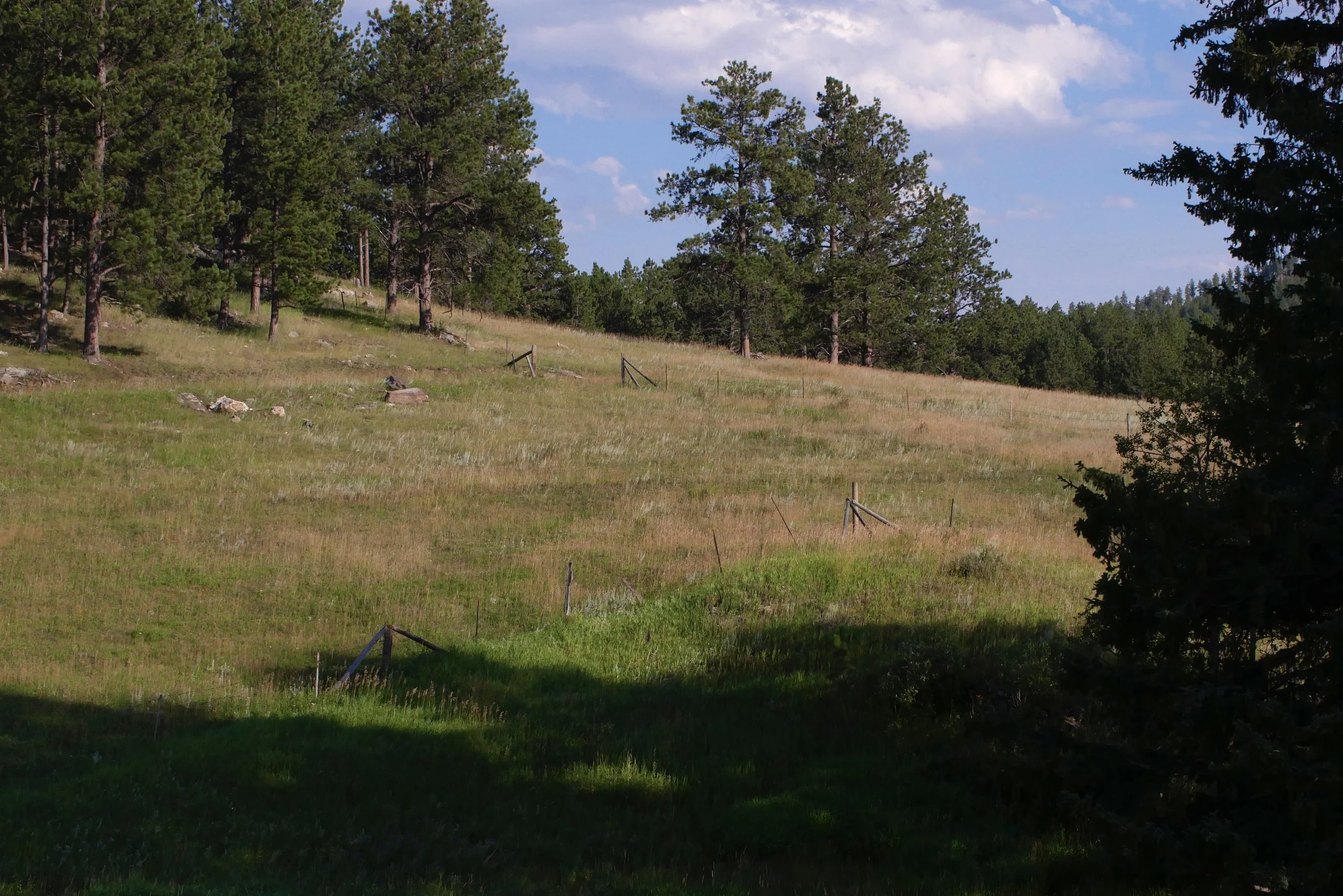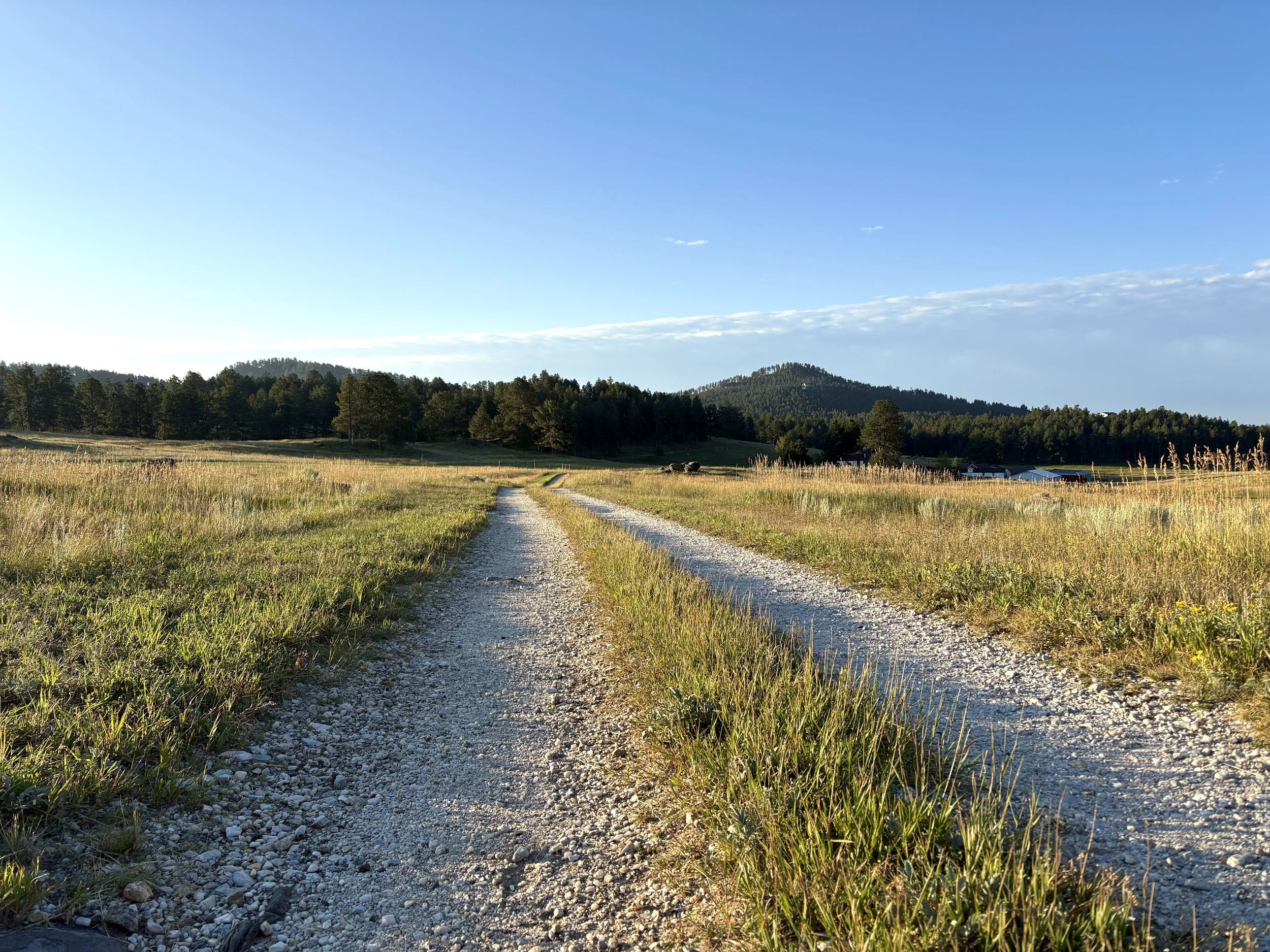What Rough Beast
A Poem for the Modern-Day Disappeared
Black Hills, South Dakota
I’ve been spending the week here in the rural Black Hills with Leah and her Grandma, surrounded by the sweet scent of Black Hills Spruce. Bright green Buffalograss sways in the field opposite here. Leaves on the Quaking Aspens shimmer like tiny mirrors as the wind hums through the needles of a tall Ponderosa Pine in the yard. A distant horse whinnies.
South Dakota State University, Cooperative Extension, "Identification of 22 Grasses Common in South Dakota" (1976). SDSU Extension Fact Sheets. 663.
It’s quiet. The relative silence of this place has got me thinking about my own grandma, who was born a decade or so before Leah’s in rural North Dakota. Before Grandma Helen passed in 2017, she sat down multiple times with my aunt Doris to write down her memories. Among those remembrances were her experiences as a young farm girl during the Great Depression. For someone who “hated writing and spelling,” (per Doris’s recollection) she had some vivid descriptions of that time. Grandma recalled that nothing would grow during the drought years, despite living on the most fertile soil in the world. “The potatoes only grew to the size of golf balls,” she wrote, “and the grasshoppers ate the fence posts.” During the drought years, there seemed to be nothing to look forward to. According to Grandma, “These were very hard times. Many people starved or committed suicide... There wasn’t anything: no crops, no money, just dust and grasshoppers.”
Fortunately for Helen’s family (and eventually, mine), the Thues’ fate was secured through the Works Progress Administration. Her father Albert’s parents were both Norwegians who emigrated to the Red River valley in their early twenties. Albert, who was born in North Dakota in 1887, was raised on the family farm, speaking only Norwegian. He eventually learned enough English to get along, but no amount of farming skill could tame the Depression-era drought. Albert was lucky enough to get a job in the WPA, building bridges. In those days, Grandma would often walk miles along dusty backroads to watch him work.
Thue family, circa 1934, Gaborg Township, ND. Back row l to r: Ione Genevieve (b. 1920), mother Inga Olive Braaten (1894), father Albert Peder Thue (1887), Peter E (1917) || Front row l to r: Marion Evangeline (1932), Irene Odella (1928), HELEN PAULINE (1923), Adeline Iola (1921), Effie Dorothy (1924), Glorella Alma (1925), Alida Frances (1930) || (Duane Arthur would be born in 1935)
As I considered Grandma Helen’s youth in the Great Depression, I couldn’t help thinking about the times we are currently living through: the looming economic collapse, gerrymandered electoral maps, AI “innovating” people out of their jobs, a would-be king in the Oval Office, and in particular, the calamitous ascent of a modern day gestapo. Every day now, dozens of regular, hard-working people who have immigrated to the US for a better life (as all my great-great grandparents did) are rounded up by masked ICE agents and disappeared to concentration camps like “Alligator Alcatraz” or Gitmo. Lines from William Butler Yeats’s “The Second Coming” have been echoing through my head for many months. I borrowed the title and first line from that classic poem.
What Rough Beast
for the modern-day Disappeared and Helen Pauline [Thue] Sauvageau
She moves her slow thighs,
sweat beads splitting her shoulder blades,
along desiccated gravel roads:
mile after mile
in the strained summer heat,
as locusts devour fenceposts,
blot the sun;
as marble-sized Russets emerge
from Agassiz Basin soil;
as dirt collects in steep drifts
among the tumbleweeds;
to see her daddy,
farmer by Heritage,
furloughed by Nature,
can’t speak
the local tongue,
but can damnsure spade clay,
build a bridge,
dig a ditch,
carry home
the sundressed daughter
not taken by the Hard Flu
on his sunken shoulders,
leathered neck.
A buck fifty his day’s wage,
ten bellies to fill
four years along and eons to go,
hand upon the Good Book,
praying for a cloud.




